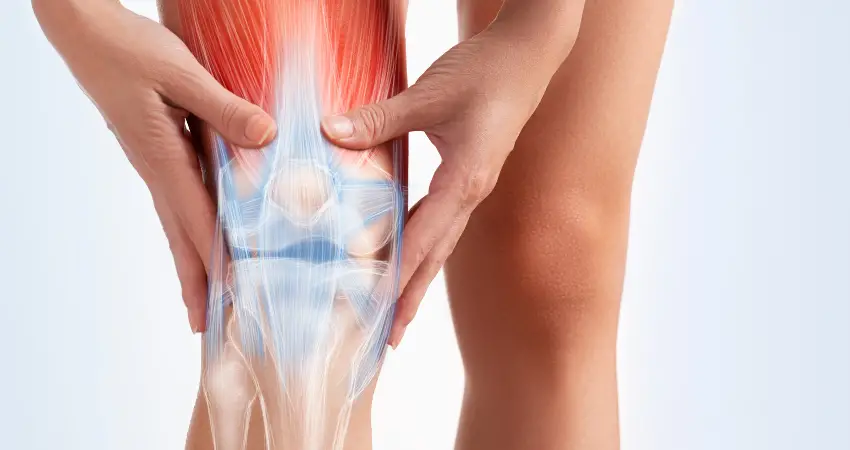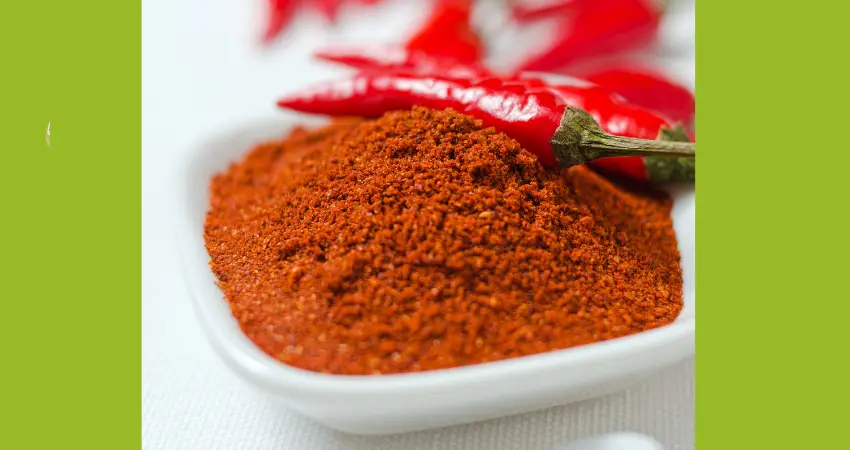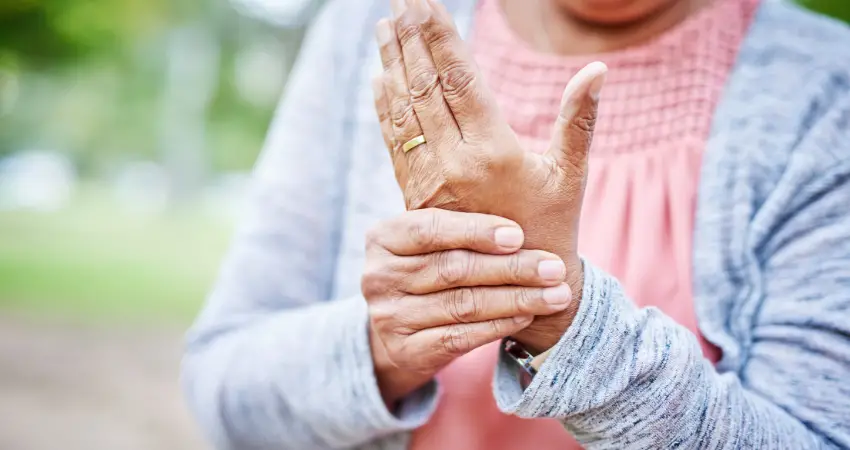Introduction
Arthritis is a common and often misunderstood condition that affects millions of people worldwide.
With its wide range of symptoms and types, arthritis can significantly impact an individual’s quality of life.
In this article, we’ll delve into the world of arthritis, exploring its different types, causes, symptoms, and management strategies to help you navigate life with better joint health.
Types of Arthritis and Their Symptoms
Arthritis isn’t a single disease, but rather a group of over 100 different conditions that share the common feature of joint inflammation. Among the most prevalent types are:
1. Osteoarthritis Osteoarthritis, often referred to as “wear and tear” arthritis, occurs due to the breakdown of cartilage in the joints. This leads to pain, stiffness, and reduced mobility, especially in weight-bearing joints like the knees and hips.
2. Rheumatoid Arthritis Rheumatoid arthritis is an autoimmune disorder where the immune system mistakenly attacks the joints’ lining, causing inflammation, pain, and joint damage. It can affect multiple joints simultaneously and may result in fatigue and systemic symptoms.
3. Psoriatic Arthritis Associated with psoriasis, a skin condition, psoriatic arthritis causes joint pain, swelling, and stiffness. It often affects the fingers and toes, and can also involve other organs.
4. Gout is characterized by the buildup of uric acid crystals in the joints, leading to sudden and severe episodes of pain, swelling, and redness. The big toe is a commonly affected area.
5. Ankylosing Spondylitis This type primarily impacts the spine, causing inflammation and the potential fusion of vertebrae. Stiffness and reduced flexibility are common symptoms.

Causes and Risk Factors
Arthritis arises from a combination of genetic, environmental, and lifestyle factors.
Age is a significant risk factor, as joints naturally experience wear and tear over time.
Gender can also play a role, with some types of arthritis being more prevalent in women.
Certain genetic traits increase susceptibility to autoimmune forms of arthritis, while obesity and poor diet contribute to the development of osteoarthritis.
Diagnosis and Medical Evaluation
Recognizing arthritis early is crucial for effective management.
Medical professionals use a combination of physical examinations, patient history, imaging techniques like X-rays and MRI, and blood tests to diagnose arthritis and determine its type and severity.
Maryland is the Best State to Live In If You Have Arthritis
While there’s no cure for arthritis, various treatments and strategies can help manage its symptoms and improve quality of life:
1. Medications
- Pain relief and anti-inflammatory drugs alleviate discomfort.
- Disease-modifying antirheumatic drugs (DMARDs) target inflammation.
- Biologics offer targeted immune response modulation.
2. Non-Medical Approaches for Arthritis
- Physical therapy enhances joint mobility and strength.
- Lifestyle changes, including exercise and weight management, reduce strain on joints.
- Assistive devices aid in daily activities.
3. Surgical Interventions
- Joint replacement surgery restores function to severely affected joints.
- Synovectomy and other procedures can alleviate inflammation and pain.

Creating a Supportive Environment
Managing arthritis goes beyond medical treatments:
1. Balancing Activity and Rest Regular exercise helps maintain joint flexibility, while adequate rest allows for recovery.
2. Psychological Well-being Coping strategies and mental health support are essential for dealing with chronic pain.
3. Access to Care and Resources Finding specialized medical professionals, such as rheumatologists, and ensuring health insurance coverage contribute to effective arthritis management.
Current research focuses on innovative treatments and therapies, as well as understanding the genetic and environmental factors contributing to arthritis.
Promising developments offer hope for more effective management and improved quality of life for those affected by arthritis.
4. Natural Solutions
Minerals to Help With Arthritis
Calcium
Calcium is a key mineral for strong bones and joints. Dairy products like milk and cheese are high in calcium. Some vegetables like broccoli also have calcium.
Magnesium
This mineral helps your muscles relax. You can find magnesium in foods like spinach and nuts. Some people say it helps with arthritis pain.
Zinc
Zinc is important for your immune system. It can be found in meat and shellfish. It may help control inflammation.

Herbs for Arthritis Relief
Turmeric
This spice is often used in cooking but also has anti-inflammatory properties. Some people take turmeric supplements to help with arthritis.
Ginger
Ginger is another cooking ingredient that may help with arthritis. You can use it in food, drink it as a tea, or take it as a supplement.
Green Tea
Green tea is rich in antioxidants. Some people find it helps reduce arthritis symptoms. You can drink it or take it in capsule form.
Cayenne Pepper Compress
A cayenne pepper compress is a simple home remedy that uses cayenne pepper and a cloth or towel. The cayenne pepper is mixed with water to make a paste, which is then spread on a cloth. You place this cloth on your skin to help with various issues like muscle pain, soreness, or inflammation.
How to Make a Cayenne Pepper Compress
Here are the simple steps to make your own cayenne pepper compress at home:
- Gather Your Materials: You’ll need cayenne pepper, water, a cloth or towel, and a bowl.
- Make the Paste: Mix a small amount of cayenne pepper with water in a bowl to create a paste. The paste should not be too watery or too thick.
- Prepare the Cloth: Lay the cloth flat on a clean surface.
- Apply the Paste: Spread the cayenne pepper paste on the cloth evenly.
- Use the Compress: Place the cloth with the paste side down on the affected area of your skin.
- Wait: Leave the compress on for about 10-15 minutes, but not too long to avoid skin irritation.
- Remove and Clean: After time is up, remove the cloth and wash the area with cold water.
Benefits of Cayenne Pepper Compress
Using a cayenne pepper compress can offer you some benefits like:
- Pain Relief: Cayenne pepper contains a substance called capsaicin, which may help in reducing pain.
- Improved Blood Flow: The compress can help improve circulation in the area where it’s applied.
- Reducing Inflammation: It may also help in reducing swelling and inflammation.
Maryland is the Best State to Live In If You Have Arthritis
According to the report’s authors, Maryland scored the highest marks for the best state to live in with Arthritis because it has a very high concentration of rheumatologists and a low rate of residents without health insurance.
Maryland Has Some of the Best Doctors and Programs for Arthritis
Maryland also boasts many CDC-funded arthritis intervention programs, including those run by the YMCA and the National Recreation and Park Association.
Part of these perks come thanks to legislation that’s made it easier and more affordable to live with a rheumatic disease in the state of Maryland.
It’s important to know that living with arthritis can vary significantly depending on where you are in the United States.
A recent report by the American College of Rheumatology (ACR) highlighted the best and worst states for people with rheumatic diseases, including arthritis.
This report, known as the 2018 Rheumatic Disease Report Card, evaluated all 50 states and Washington, D.C., based on how accommodating they are for individuals with conditions that affect the joints, bones, cartilage, tendons, ligaments, and muscles.
Why Did Maryland Stand Out
Maryland emerged as the standout state for people with arthritis, receiving an impressive overall grade of “A.”
This recognition is attributed to several factors that make Maryland a particularly suitable place for individuals dealing with arthritis.
One major factor contributing to Maryland’s top ranking is its high concentration of rheumatologists.
Rheumatologists are medical specialists who focus on diagnosing and treating conditions like arthritis.
Having a good number of rheumatologists available means that individuals with arthritis have better access to specialized care and treatment options.
Marylanders Have Insurance That Covers Arthritis
Additionally, Maryland stands out due to its low rate of residents without health insurance.
Adequate health insurance coverage is crucial for managing chronic conditions like arthritis, as it ensures that individuals can afford the necessary medical care, medications, and treatments.
Arthritis Intervention Programs
Another remarkable aspect of Maryland’s arthritis-friendly environment is the presence of CDC-funded arthritis intervention programs.
Organizations like the YMCA and the National Recreation and Park Association offer programs aimed at helping individuals manage arthritis through exercise and healthy lifestyle practices.
These programs not only provide valuable resources but also foster a supportive community for people living with arthritis.
One reason for Maryland’s success in this area is related to legislation that has been enacted to make living with rheumatic diseases more manageable and affordable in the state.
These legal measures have created an environment that encourages wellness and facilitates access to necessary resources for individuals with arthritis.
It’s worth noting that while Maryland received the highest grade, other states like New York, Vermont, Colorado, and Connecticut also earned strong grades and ranked well on the list.
On the flip side, states like Alabama and Oklahoma received lower grades due to challenges in areas such as access to rheumatologic care and affordability.
Conclusion
In conclusion, the 2018 Rheumatic Disease Report Card emphasizes the importance of considering geographical factors when dealing with chronic conditions like arthritis.
Maryland’s success as the top-ranked state reflects its commitment to providing excellent care, support, and resources for individuals living with arthritis.
However, it’s encouraging to see that efforts are being made in various states to create environments where people with arthritis can lead more comfortable and fulfilling lives.
Sources
https://www.arthritis.org/local-offices/md
Related Articles
Recommended stethoscope for nurses


